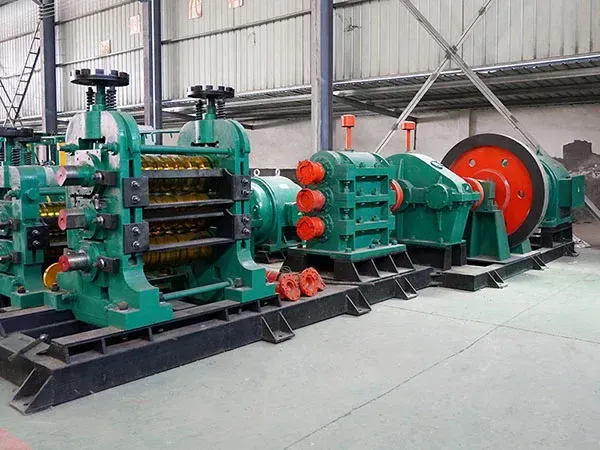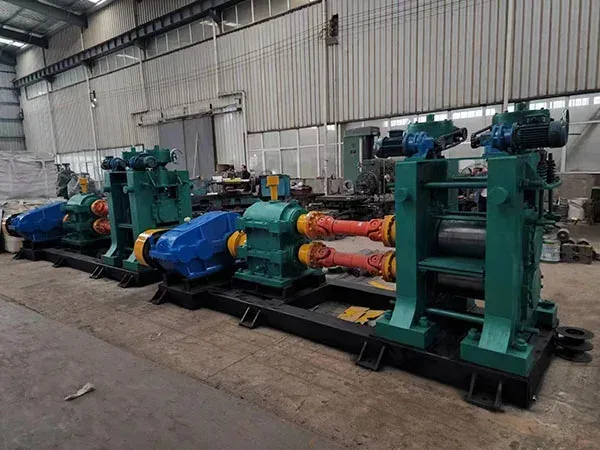Hot rolling and cold rolling are two primary metalworking processes that involve shaping metal by passing it through rollers. While both methods aim to reduce the thickness of the metal and achieve desired mechanical properties, they differ significantly in terms of temperature, resulting microstructure, and mechanical characteristics.

Process:
Hot rolling involves processing metal at temperatures above its recrystallization temperature. This means the metal is heated to a point where its internal grain structure can rearrange and new, strain-free grains can form. This continuous recrystallization prevents strain hardening during deformation.
Key Characteristics:
Temperature: Above recrystallization temperature (typically around 950°C to 1200°C for steel).
Deformation: Large reductions in thickness are possible in a single pass due to the metal's reduced strength and increased ductility at high temperatures.
Energy Consumption: High due to the need for heating the metal, but lower rolling forces are required.
Surface Finish: Generally has a rougher, oxidized surface due to scale formation at high temperatures. Descaling is often required.
Dimensional Accuracy: Less precise due to thermal expansion and contraction, making it harder to maintain tight tolerances.
Microstructure: Produces a more uniform, equiaxed (roughly equal in all dimensions) grain structure, which can improve toughness and ductility.
Mechanical Properties: Lower strength and hardness compared to cold-rolled products, but improved ductility and formability.
Residual Stresses: Typically has very low residual stresses because the high temperature allows for stress relief.
Common Applications:
Hot rolling is used for bulk deformation and for producing large structural components. Examples include:
Structural steel (I-beams, H-beams, channels)
Railway tracks
Plates for shipbuilding and construction
Seamless pipes
Initial breakdown of ingots and billets

Process:
Cold rolling involves processing metal at room temperature (below its recrystallization temperature). The deformation occurs by forcing the metal through rollers, which plastically deforms the grains and introduces strain hardening.
Key Characteristics:
Temperature: Room temperature.
Deformation: Smaller reductions in thickness per pass are typical due to the metal's higher strength and reduced ductility. Multiple passes are often required.
Energy Consumption: Lower in terms of heating, but much higher rolling forces are needed, requiring more powerful rolling mills.
Surface Finish: Excellent, smooth, and bright surface finish because no scale forms.
Dimensional Accuracy: Highly precise with tight tolerances achievable due to the absence of thermal expansion and contraction.
Microstructure: Produces an elongated, deformed grain structure, which can increase strength and hardness.
Mechanical Properties: Increased strength, hardness, and yield strength due to strain hardening, but reduced ductility.
Residual Stresses: High residual stresses are common due to the uneven deformation and the inability of the material to relieve stresses at room temperature.
These can be mitigated by post-rolling annealing.
Common Applications:
Cold rolling is used for applications where surface finish, dimensional accuracy, and enhanced mechanical properties are critical. Examples include:
Automotive body panels
Appliances (refrigerators, washing machines)
Furniture
Precision tubing
Tin plates
Aerospace components
Here's a table summarizing the main differences:
|
Feature |
Hot Rolling |
Cold Rolling |
|
Temperature |
Above recrystallization temperature |
Room temperature (below recrystallization) |
|
Deformation |
Large reductions per pass |
Smaller reductions per pass, multiple passes |
|
Surface Finish |
Rough, scaled, oxidized |
Smooth, bright, clean |
|
Dimensional Acc. |
Less precise |
Highly precise, tight tolerances |
|
Strength |
Lower |
Higher (due to strain hardening) |
|
Hardness |
Lower |
Higher (due to strain hardening) |
|
Ductility |
Higher |
Lower |
|
Residual Stress |
Low |
High (can be detrimental) |
|
Microstructure |
Uniform, equiaxed grains |
Deformed, elongated grains |
|
Cost |
Generally lower for bulk production |
Higher due to more passes and specialized mills |
|
Applications |
Structural components, railway tracks, plates |
Automotive panels, appliances, precision parts |
The above is all about the difference between cold rolling and hot rolling.Hot rolling and cold rolling are two distinct metalworking processes used to shape and strengthen metal sheets and other forms. While both involve passing metal through rollers, the temperature at which this occurs leads to significant differences in the final product's properties and applications.
A Complete Analysis of the Cold Rolling Process: From Raw Materials to High-precision Finished Coils
2025-12-15Cold Rolling Mill Working Principle Explained: A Complete Beginner’s Guide
2025-12-11Cold Rolling Mill Price Guide 2025: Key Cost Factors Every Buyer Should Know
2025-12-05Steel Bar Production Line vs Traditional Processing: Maximize Efficiency, Quality & Profitability
2025-11-24Address: Gongyi City, Zhengzhou City, Henan Province
E-mail: info@gyssljx.com
Phone: 0086 19339904886
If you have any product related questions, please feel free to call us at any time

With 30 years of professional experience, we customize efficient and energy-saving rolling mill production lines, providing you with one-stop service from design to installation and commissioning, helping you achieve steady growth in the steel industry.
Go
Top
SHENLONG Machinery · Your Rolling Equipment Expert ·